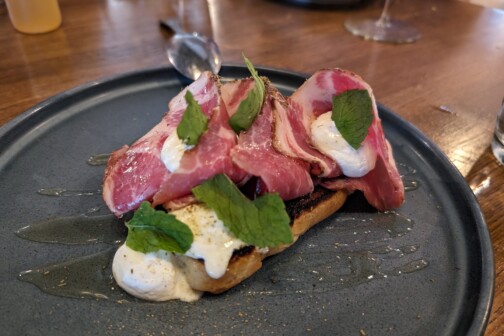NOT SO LONG AGO, PEOPLE did their Christmas shopping downtown. Since several stores had doors on Main and Elm, a trek down one street and back up the other in whatever kind of weather was a common excursion from the day after Thanksgiving until Christmas Eve. Now the shopping malls have become not only the place to shop but also the place to celebrate the holiday season.
When Big Town opened in February 1959, at the intersection of Highway 80 and Buckner Boulevard, it was one of four single-roofed shopping malls in the United States; the others were in the frostier climates of Minneapolis. Denver and Baltimore. The concept was promoted as a “city of shops with air-conditioned sidewalks.”
Developer Gerri Von Frel-lick, a Texan who had moved to Colorado, had no intention of taking on the downtown stores when he selected the East Dallas site. Assuming 90 percent of the upper-income shoppers would continue to buy downtown, he targeted the middle-income markets of East Dallas, Garland and Mesquite, with All-American stores such as Kinney Shoes, Lerner’s and Dallas’ first Montgomery Ward store. It was all well planned, except for the 10,000 cars that showed up in the 7,000-car parking lot on opening day, lured not only by the $1,000 bills that were being given away, but also by the inborn urge to roam and gawk.
That Christmas, Big Town visitors noticed certain advantages to shopping at the mall, perhaps the most significant being that when it was cold and drizzly outside, a mall shopper did not have to spend the day burdened with two coats, a sweater, earmuffs, scarf and galoshes. Mom could park dad on a handy bench to guard the packages, and she could ignore the children while they watched cartoons at Giggle Box Theater.
What Dallas real estate developer Raymond Nasher had in mind for NorthPark was not just the middle-income market or just the upper-income market-he wanted it all. When the center at Central Expressway and Northwest Highway opened in August 1965, it was the largest shopping mall in America, with a targeted trade territory measured in terms of counties rather than neighborhoods. Shoppers could park outside JCPenney and meander down the L-shaped arcade in the direction of Titche Goet-tinger and west toward Neiman Marcus as far as their money would take them.
When NorthPark opened, I was living in Piano, which in the mid-’60s had Duane’s Waffle Shop and the Western Auto Store, but not much else. I had seen the spectacular lights on the pecan tree in Highland Park and the laughing Santa Claus in the Sanger Bros, window on Main Street, but I had never seen anything like the first Christmas at NorthPark. Walkways were lined with trees of pine cones, apples and lemons. Reindeer made of pecans and almonds with horns of raisins pulled a marshmallow-bearded Santa in a sleigh of apples over a field of snow (actually two tons of salt).
In keeping with his goal of catering to anyone with money to spend. Nasher’s prize development featured a careful blend of exclusive shops, such as Vivian McNeil and Murata Pearls, and more pedestrian establishments like F.W. Wool-worth’s and the Singer Sewing Center. A shopper could buy a hook-on necktie for a dollar at Leed’s Ties, Ltd. or a mink recliner in the hue of “Autumn Haze” at Contour Chairs for $2,995. Neiman Marcus had a $25,000 toy roller coaster, and a really serious buyer could spend $100,000 for a diamond necklace at Linz Jewelists.
Families could be seen at NorthPark celebrating Christmas together. They walked arm-in-arm and talked to one another, even if just to say “Meet me back at the fountain.” They listened to Perry Como singing “Silent Night” in the Melody Shop, had egg nog at the London House, and in the afternoon, posed for a family photo at Gittings before sampling the delectable desserts at Black Forest Bakery. After a weary but rewarding day, all that remained to top off a perfect Christmas outing was to remember where they had parked the car.
Get our weekly recap
Brings new meaning to the phrase Sunday Funday. No spam, ever.
Related Articles

Media
Will Evans Is Now Legit
The founder of Deep Vellum gets his flowers in the New York Times. But can I quibble?
By Tim Rogers

Restaurant Reviews
You Need to Try the Sunday Brunch at Petra and the Beast
Expect savory buns, super-tender fried chicken, slabs of smoked pork, and light cocktails at the acclaimed restaurant’s new Sunday brunch service.

Arts & Entertainment
DIFF Preview: How the Death of Its Subject Caused a Dallas Documentary to Shift Gears
Michael Rowley’s Racing Mister Fahrenheit, about the late Dallas businessman Bobby Haas, will premiere during the eight-day Dallas International Film Festival.
By Todd Jorgenson


